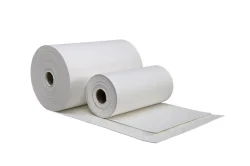Overview of sealing and gaskets
2023-11-13
Sealing and gaskets are crucial components in various industries, playing a vital role in preventing leaks, protecting against environmental factors, and ensuring the proper functioning of equipment. Here's an overview of sealing and gaskets:
1. Sealing:
- Purpose: Sealing is the process of closing off or blocking the passage of fluids or gases between two surfaces to prevent leakage. It is essential for maintaining the integrity and efficiency of systems and equipment.
- Applications: Sealing is used in a wide range of applications, including pipelines, hydraulic systems, automotive engines, pumps, compressors, and more.
- Types of Seals:
- O-Rings: Circular elastomeric seals that are commonly used for static and dynamic sealing applications.
- Gaskets: Flat or shaped seals used to fill the space between two surfaces, typically in flange joints.
- Lip Seals: Also known as oil seals, these are used to prevent the leakage of lubricants in rotating shafts.
- Mechanical Seals: Used in rotating equipment to prevent the leakage of fluids between a rotating and a stationary part.
- Diaphragms: Flexible barriers that prevent fluid contact between different components in a system.
- Sealing Tapes and Compounds: Used for sealing joints and connections in various applications.
2. Gaskets:
- Purpose: Gaskets are mechanical seals that fill the space between two or more mating surfaces, creating a tight seal to prevent leakage of fluids or gases.
- Materials: Gaskets can be made from various materials, including rubber, cork, paper, metal, and composite materials, depending on the application and required properties.
- Types of Gaskets:
- Flat Gaskets: Simple, flat pieces used in static sealing applications.
- Ring Gaskets: Circular gaskets often used in flange connections.
- Spiral Wound Gaskets: Composed of a metal winding and filler material, suitable for high-pressure and high-temperature applications.
- Rubber Gaskets: Made from elastomeric materials, such as silicone or neoprene, for flexibility and resilience.
- Metallic Gaskets: Constructed from metal materials like stainless steel or copper, providing strength and resistance to high temperatures.
- Cork Gaskets: Commonly used in low-pressure applications and as a material for automotive gaskets.
- Applications: Gaskets are used in industries such as manufacturing, automotive, aerospace, oil and gas, chemical processing, and plumbing.
- Installation: Proper installation and torqueing of bolts or fasteners are crucial for the effective performance of gaskets.
Proper selection of sealing and gasket materials is essential to ensure compatibility with the operating conditions, including temperature, pressure, and the nature of the fluids or gases being sealed. Regular inspection, maintenance, and replacement of seals and gaskets are important for preventing leaks and ensuring the continued reliability of equipment and systems.



